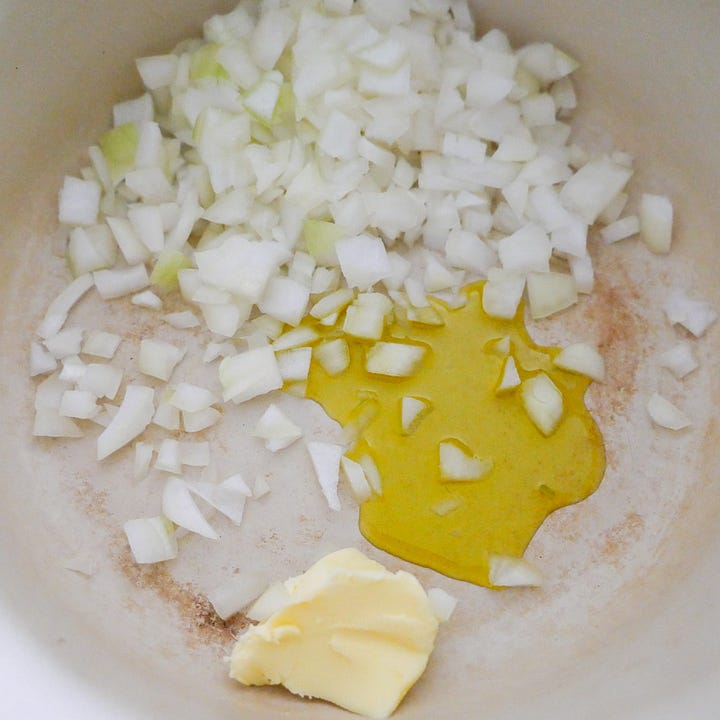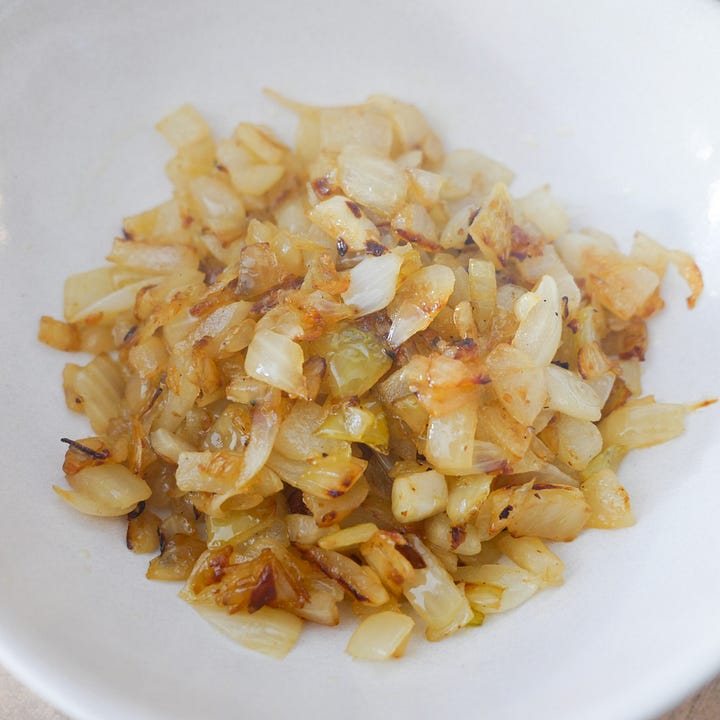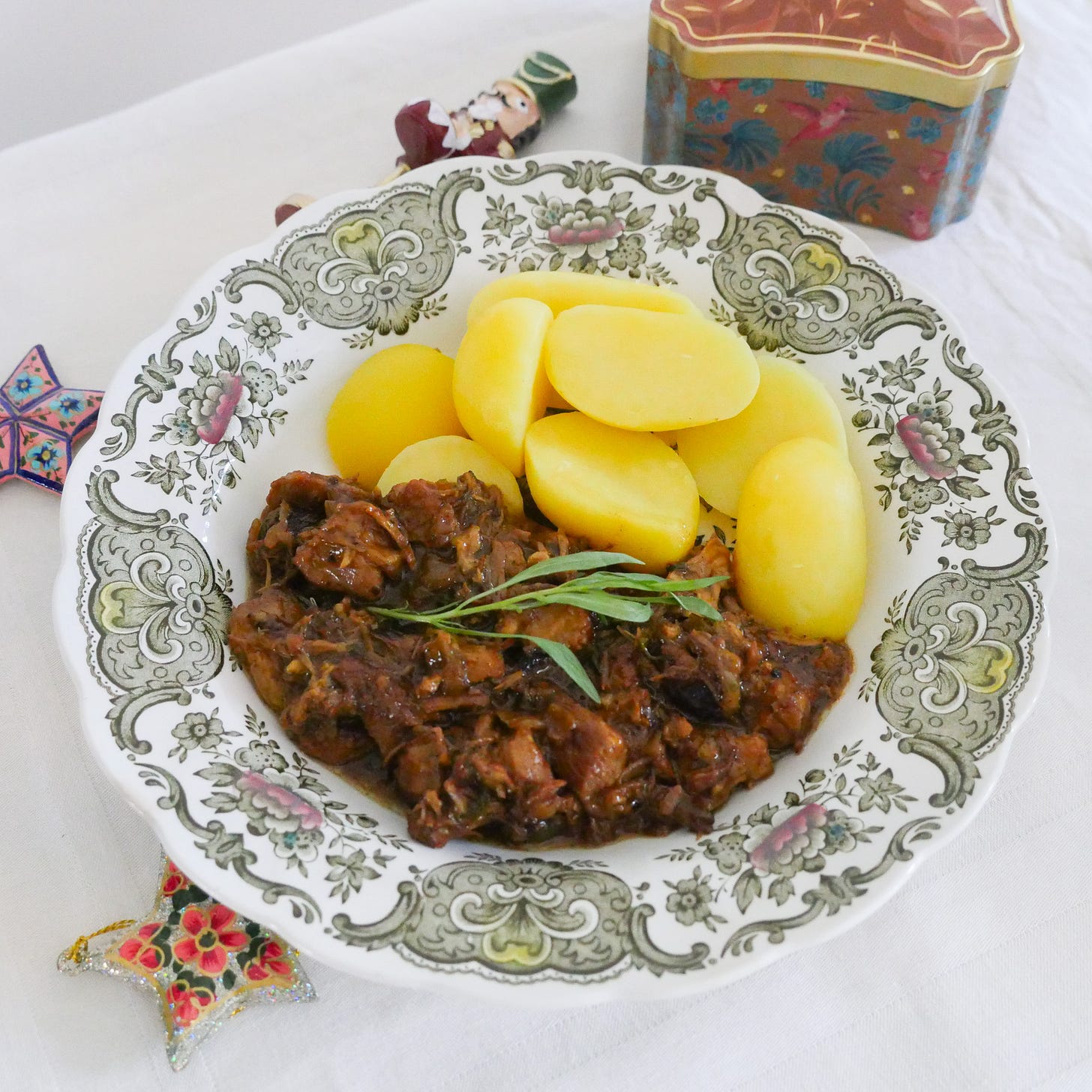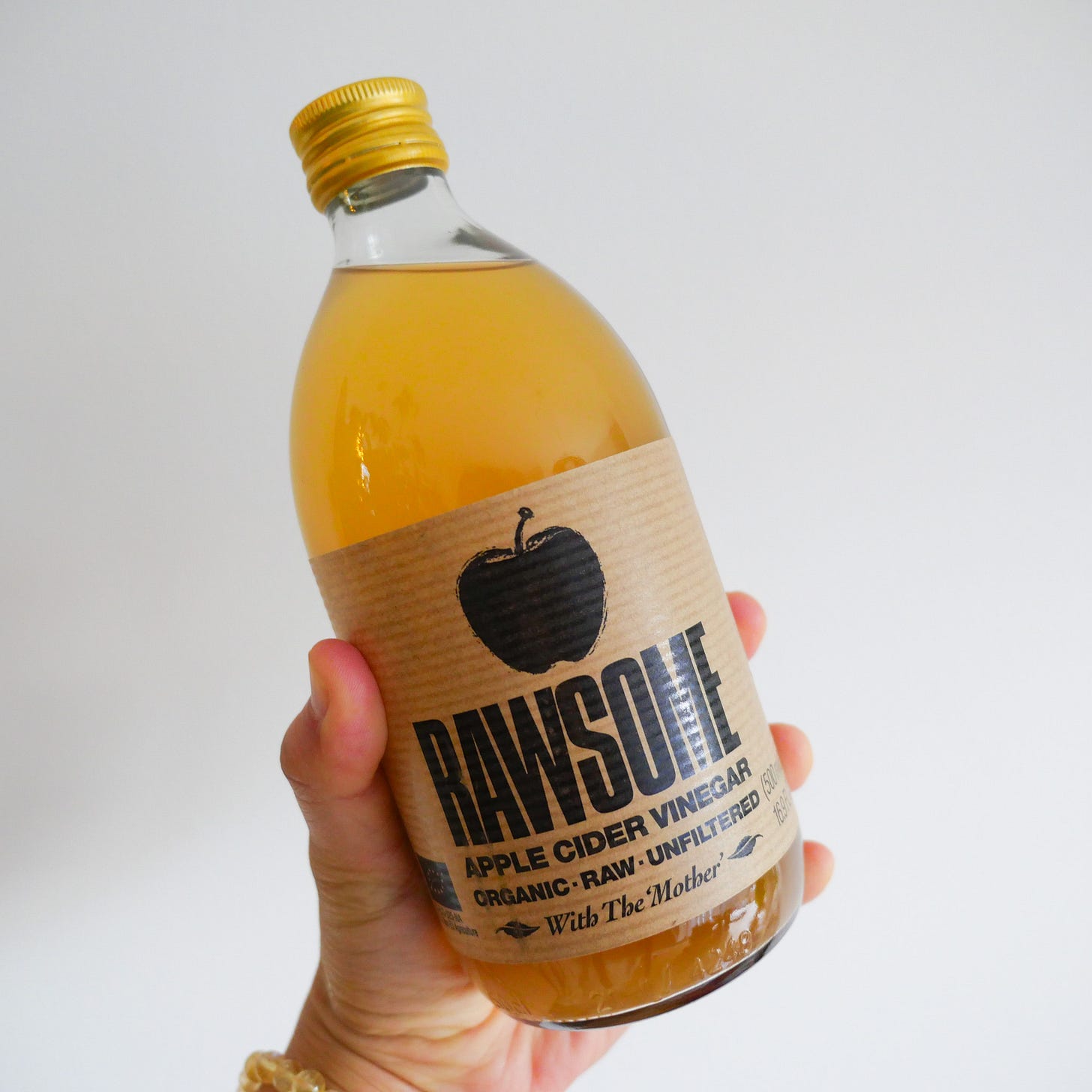Porc au Cidre
For today’s recipe and the second dish on our Cozy Christmas menu, we’ll cook porc au cidre. This dish is actually a classic French dish hailing from Normandy, but it’s perhaps less known than other typical French classics.
Normandy, along with Brittany, is one of the main regions in France known for its cider production. The apples and cider from this region are integral to the local culinary traditions, and porc au cidre, or pork cooked in cider, is a dish that reflects this heritage.
The use of cider in cooking in Normandy dates back to the 9th century, when Emperor Charlemagne ordered the planting of apple orchards in the region. This laid the foundation for the widespread production and use of cider in local cuisine. Thus, as the name suggests, cooking porc au cidre involves slow-cooking pork in cider alongside onion and other ingredients. This slow-cooking method allows the flavors to meld together and the pork to become tender.
Since cider is the main flavor in this dish, you want to use the best quality cider that you can get. I strongly recommend using raw apple cider. Raw apple cider is often cloudy and less filtered, retaining more of the natural apple solids, whereas pasteurized cider is clearer and more opaque due to the filtration and pasteurization process. Raw apple cider also tastes sharper and more complex and tannic compared to pasteurized cider, with a vinous, resinous, and earthy flavor profile. This is because the natural yeasts and bacteria on the apples begin to ferment the cider immediately, adding layers of flavor. Pasteurized cider, on the other hand, is smoother and sweeter, but it lacks the sharpness and complexity of raw cider, often tasting more like sweet apple juice.


Raw apple cider also tastes sharper and more complex and tannic compared to pasteurized cider, with a vinous, resinous, and earthy flavor profile. This is because the natural yeasts and bacteria on the apples begin to ferment the cider immediately, adding layers of flavor.
As I promised in the previous blog, all the recipes in our Cozy Christmas menu are easy to make. The same goes for this porc au cidre. Once you have cooked the pork and added the broth, all you need to do is let the fire do its magic. Let it stew for about an hour until the meat is tender and falls apart.



Since I have leftover tarragon from my confit leek, I chopped up some sprigs and added them to this stew. It’s totally optional though, the porc au cidre is delicious even without any herbs.
Ok, folks, I hope you enjoy today’s recipe and dish #3 on our Cozy Christmas menu. In the next newsletter, I’ll publish the recipe for our dessert. See you then!
Serves 4
Preparation time: 10 minutes
Cooking time: 1 hour 45 minutes
Level of difficulty: 1/3
Keep for 1 week, refrigerated
Ingredients:
1 onion, chopped
2 tbs butter
2 tbs olive oil
600g/ 21 oz. pork (use sirloin or shoulder), cut into big chunks
1 tbs flour
3 sprigs tarragon (optional)
250ml/ 1 cup raw apple cider
250ml/ 1 cup chicken broth
To taste, salt and black pepper
Steps:
Melt a tablespoon of butter and a tablespoon of olive oil in a Dutch oven. Sauté onion for 15-20 minutes on low heat until soft, brown (not burnt), and fragrant. Take the onion out of the pan but don’t clean the pan.
Melt the rest of the butter and olive oil in the same pan. Turn up the heat to high and cook the pork until they’re brown all around for about 5-7 minutes.
Add flour to the pork and stir. Cook for about 2 minutes until the flour smells nutty.
Strip the tarragon leaves from their stems. Add them to the pan alongside the cider and broth. Cook for about 1-1.5 hours until the meat is tender. Add a bit of water if the stew dries up. Don’t forget to stir occasionally so the meat doesn’t stick to the bottom of the pan. Check the seasoning and add salt and pepper to your taste. Serve with boiled potatoes and other side dishes of your choice.






